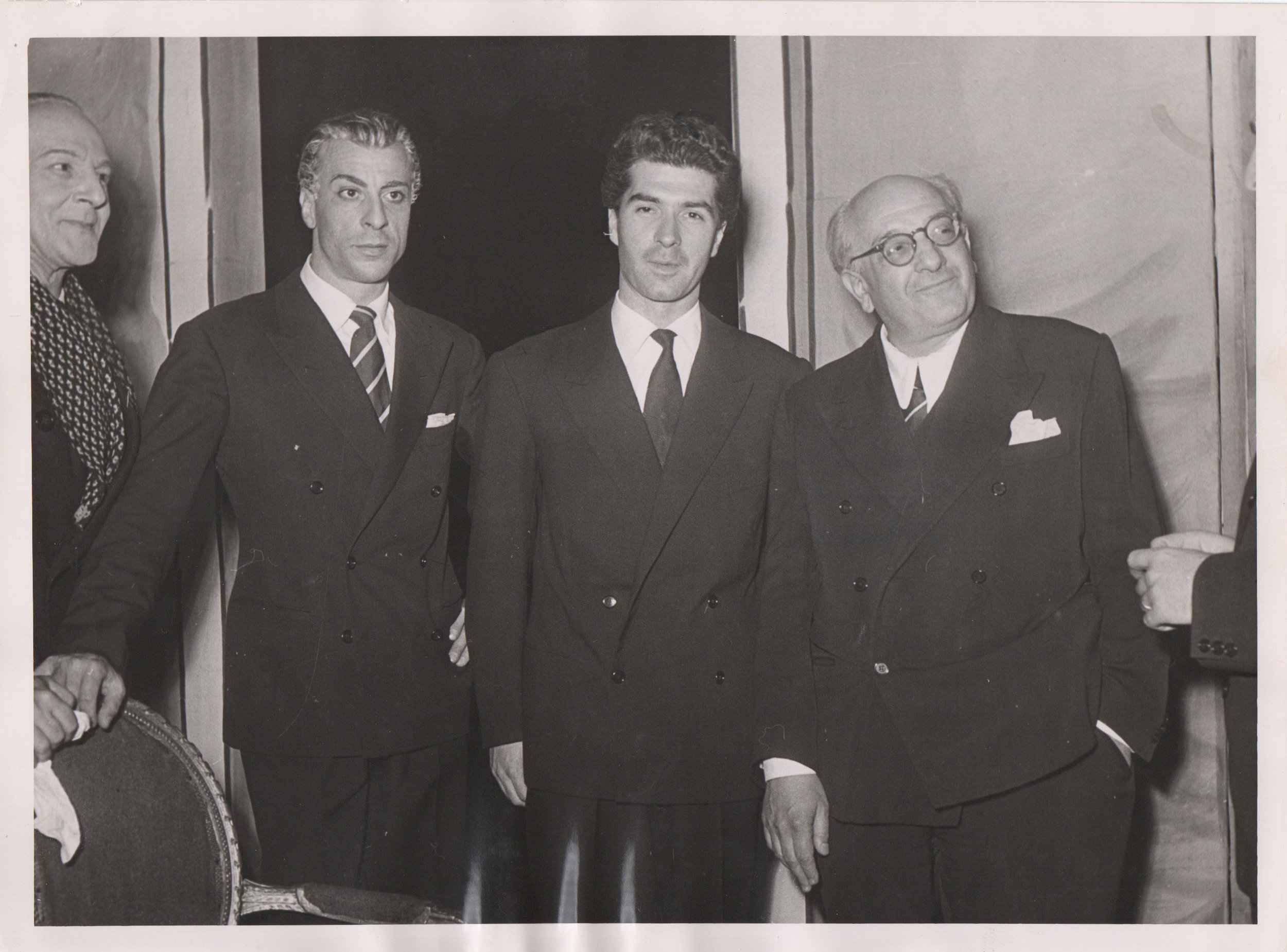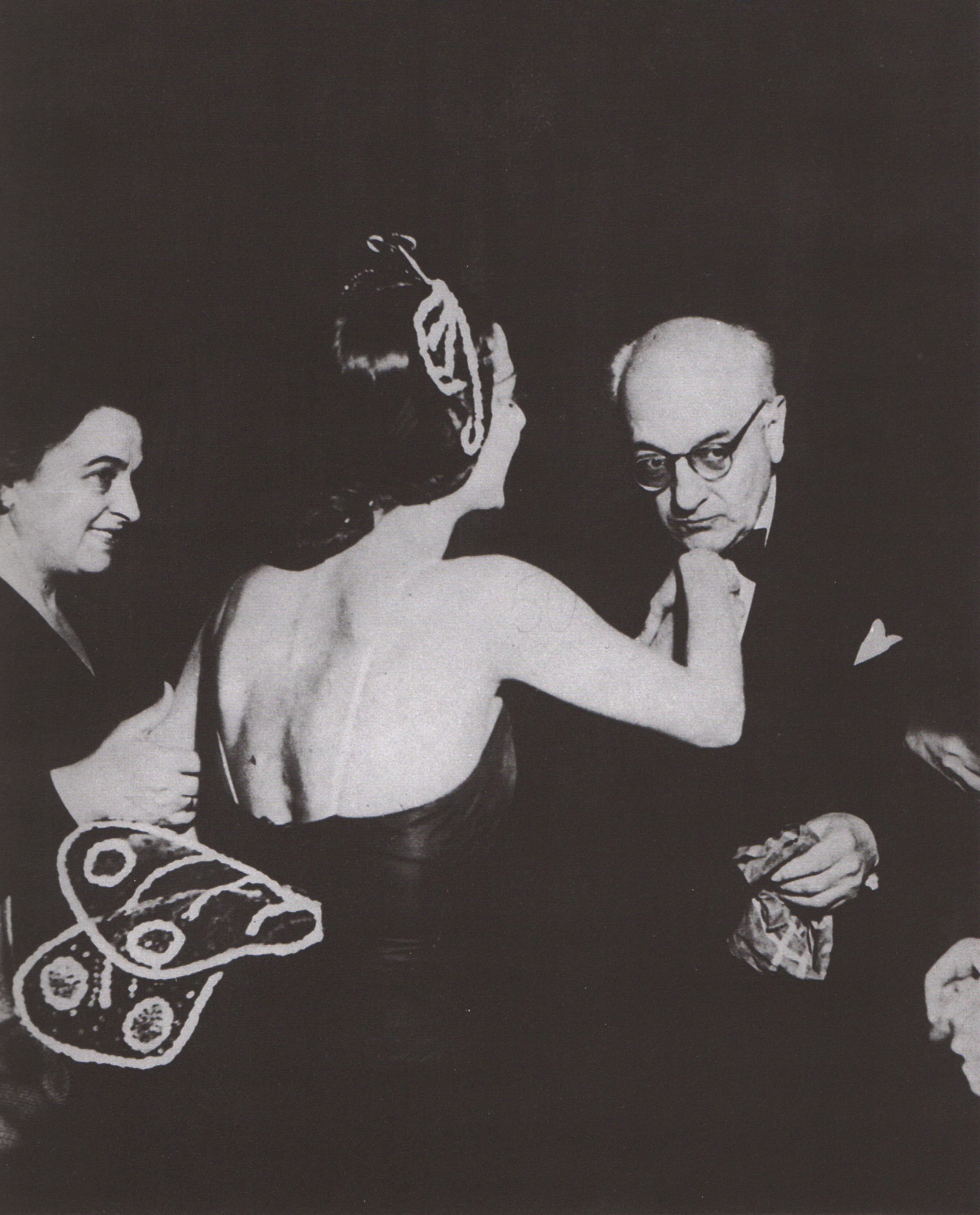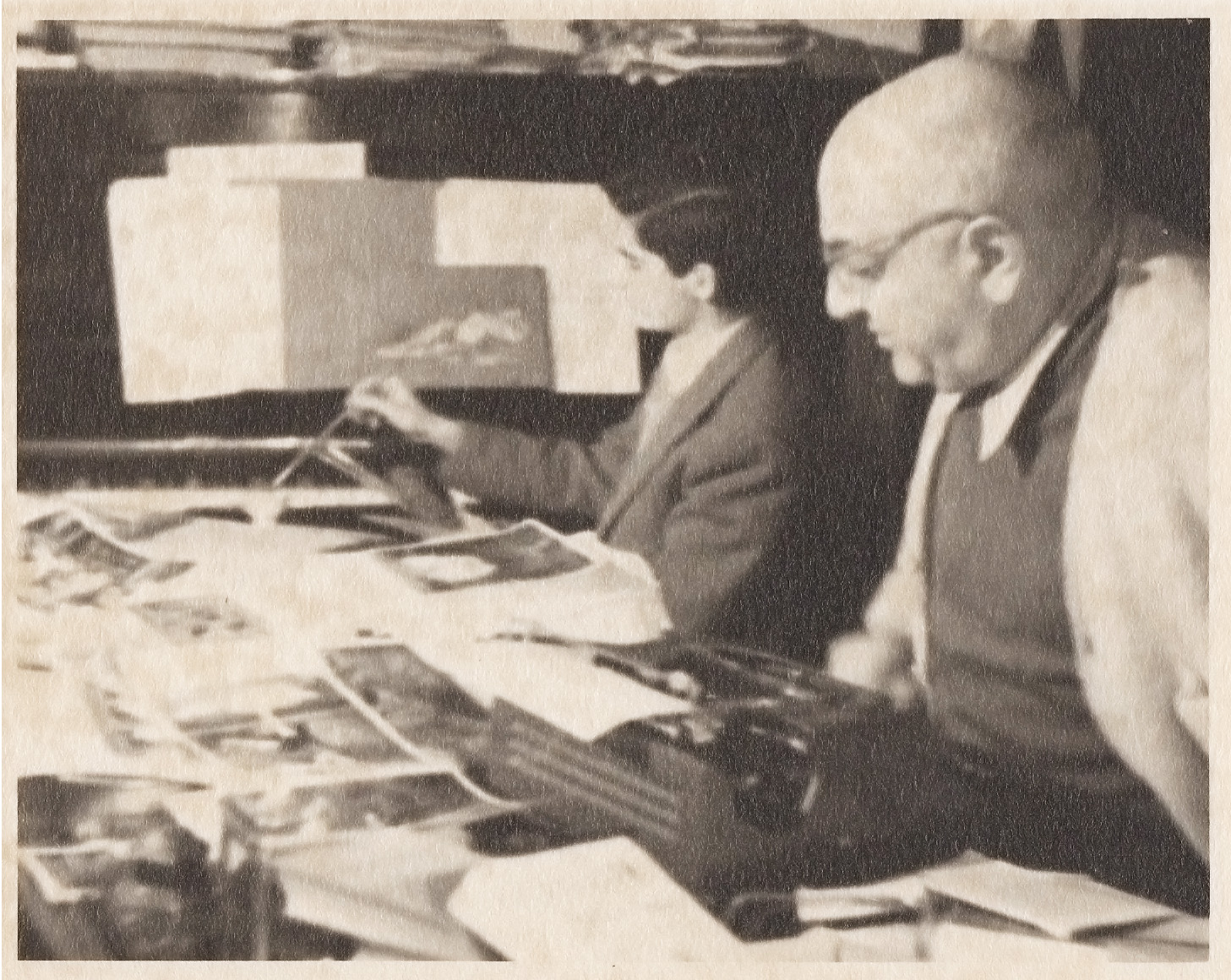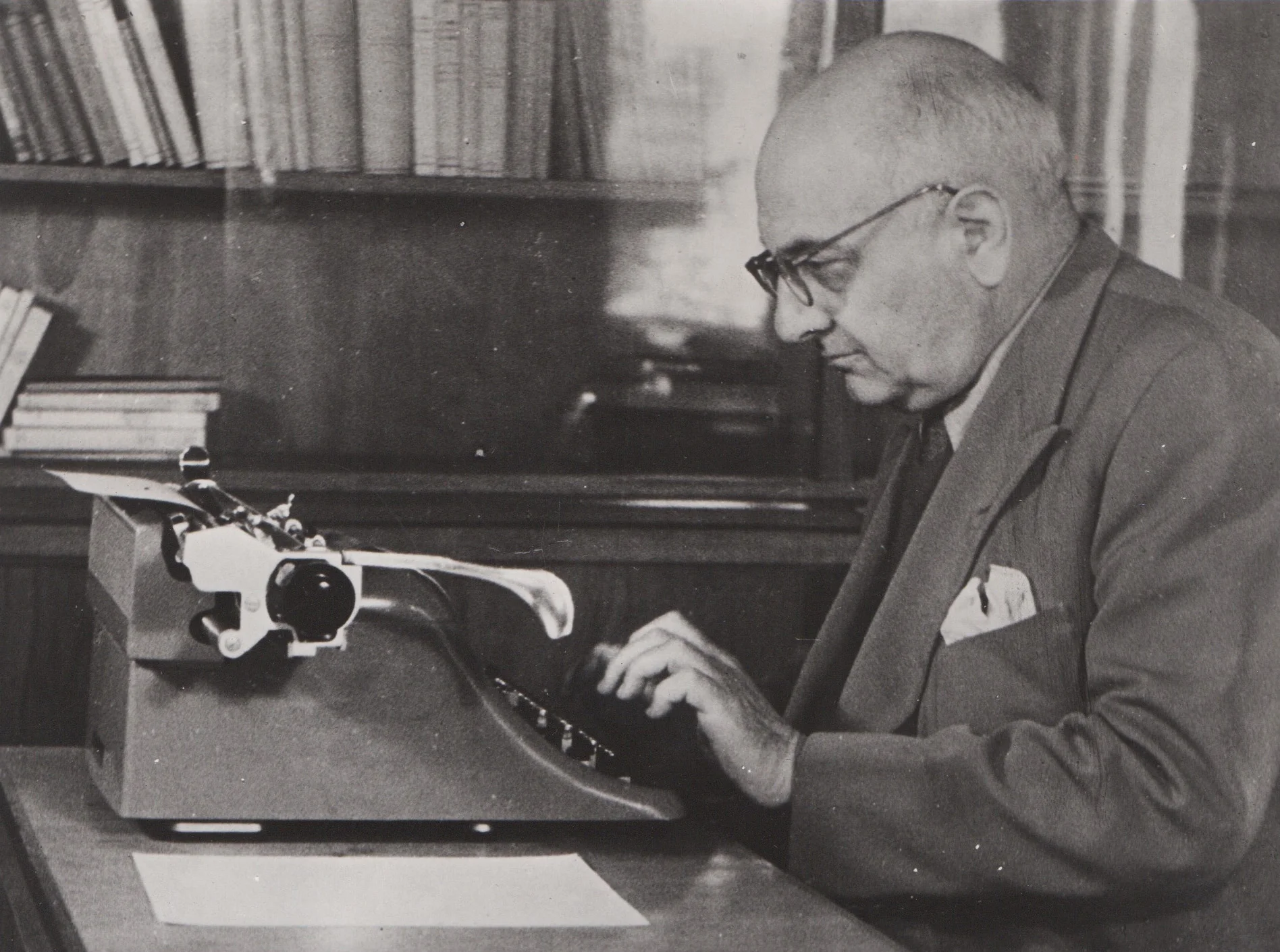Biography
“We live in a phantasmal world with which we gradually get in touch”.
Alberto Savinio, 1919
Childhood
Alberto Savinio was born in Athens on 25th August 1891, with the name of Andrea de Chirico; he was the brother of Giorgio de Chirico, who was born in Volos in 1888. He chose to be called Alberto Savinio during his first years of living in Paris, in 1910.
Their father, the engineer Evaristo, belonged to an aristocratic Italian family of diplomats that had lived in Saint Petersbourg and then in Constantinople.
Evaristo de Chirico was the owner of a ferry constructions company, and he had also installed the line Athens-Larissa, in Thessaly, Greece.
While Giorgio de Chirico followed the study of painting in the Polytechnic of Athens, Savinio decided to study music. Savinio acquired his degree in piano at the very young age of twelve.
When their father died, in 1905, the two brothers, with their mother Gemma, left Greece and moved to Italy. They stopped in Venice and Milan, in order to get to know the country of their origins. Then, they moved to Munich. Giorgio de Chirico attended the local Academy of Art and the fifteen-year-old Savinio took lessons of harmony and counterpoint from the famous composer Max Reger.
Both brothers were influenced by German culture; mainly Schopenhauer, Nietzsche and Weininger, as well as by the music of Wagner and the paintings by Arnold Böcklin.
During this period, while Giorgio de Chirico was in Munich, Savinio spent some time in Milan with his mother, hoping to find a job as a composer, through Casa Ricordi. An opera, Carmela, composed when he was 16, had interested Mascagni. The project was never fulfilled, but Andrea de Chirico, who would later change his name to Alberto Savinio, continued to compose while simultaneously pursuing a passion for creative writing.
The 1910s
“He is an eminently dramatic spirit, and he has the hope and the will of bringing onto the stage the powerful breath of real poetry. He thinks he can present in the theatre and let emerge with his music everything that, in our time, reveals itself through a weird and enigmatic shape”.
Guillaume Apollinaire, 1914
In 1910 he decided to go to Paris, where he heard about the poet Guillaume Apollinaire and other artists and writers close to him – Picasso, Max Jacob, Francis Picabia, etc. – the modern avant-garde.
Savinio immediately got in touch with Apollinaire, and they became friends. He published his first poetic text in French, Le chants de la mi-mort, in Apollinaire’s magazine «Les soirées de Paris», in addition to theoretical papers and programmes on music.
Le chants de la mi-mort were accompanied by pieces of music composed for a complete show that was never performed. This, together with other pieces for voice and piano, are the program of a concert that took place in May 1914, in the editorial office of «Les soirées de Paris», a concert that greatly impressed the audience – among which were the leading exponents of the Parisian avant-garde: Picasso, Archipenko, Paul Guillaume and Soffici and Canudo who were in Paris – for the passion and impetuosity of the young composer and pianist.
In a note many years later, Savinio stated that the characters of Chants de la mi-mort were the origin of his brother Giorgio de Chirico’s metaphysical paintings. Savinio also said that his pieces from those years are the musical equivalent of Apollinaire’s poetry and his brother’s painting.
On the magazine «Les soirées de Paris», it is stated that the set and stage costumes of Chants were created by the author. It therefore seems that Savinio’s entry into painting started well before his official beginning in 1925.
In 1914 the war broke out. In 1915 Italy entered the war and the two brothers Giorgio and Andrea de Chirico were mobilised and they reached the Italian district of Ferrara.
The two brothers took a house in Ferrara, together with their mother Gemma, in Via Montebello, in front of Filippo De Pisis’ house: Palazzo Tibertelli.
While Savinio dedicated his paper Frara, città del Worbas to the city of Ferrara, De Pisis wrote on Ferrara La Città dalle 100 Meraviglie, dedicated to Savinio.
In Ferrara, Giorgio de Chirico and Carlo Carrà were hosted in the Hospital of Villa del Seminario, until the end of the war.
The meeting in Ferrara between Carrà and de Chirico, Savinio, De Pisis determined the diffusion of the metaphysical style that de Chirico had already established on his own.
In June 1917, Savinio was sent to the eastern front in Salonicco as an interpreter of Greek. From there he sent literary papers to many Italian and International avant-garde magazines, like «Dada» by Tristan Tzara, in the first issue of which, in 1917, Un vomissement musical was published and in the third issue Seconde origine de la voie lactée.
The 1920s
At the end of 1918 he was demobilized, and he returned to Italy, joining his mother and brother in Rome. He continued an intense relationship with the avant-garde magazines. In 1918 his first Italian book Hermaphrodito was published for the Edizioni de La Voce. In 1920 on the magazine «Il convegno» he published La casa ispirata. In the meantime he worked on aesthetical essays for the magazine «Valori plastici», directed by Mario Broglio. This magazine wanted to issue a call to order in the field of arts; much like Cardarelli was doing with «La Ronda» in the literary field.
In 1924 he got in touch with the group of young authors and actors that gave birth to the Teatro d’Arte: Bontempelli, Prezzolini, Orio Vergani, Stefano Landi and his father Luigi Pirandello, who assumed the organisation’s direction. For the Teatro d’Arte he wrote Capitano Ulisse, scheduled in 1925, but performed only in 1938. At the Teatro d’Arte, La morte di Niobe, a tragedy for mimes, whose musical score had been written in 1913, was performed with scenes and costumes by Giorgio de Chirico. The literary text was published in 1925 on «La rivista di Firenze», directed by Giorgio Castelfranco.
In April 1926, Savinio sent a group of drawings on paper to his brother in Paris; de Chirico replied immediately to him defining these drawings as “very beautiful and altogether impressive”. In July 1926, he moved to Paris with his wife, the actress Maria Morino, met at the Teatro d’Arte, and there he started his career as a painter.
According to De Pisis “Savinio was already painting. I remember some pen drawings of him, almost Pre-Raphaelite or Böcklinian, with Greek temples and figures with black peplum on the seashore”.
Giorgio Castelfranco commented: “This phenomenon is interesting for us art historians; the key is the concept of a Renaissance Bottega. To see someone at work, to be next to someone who is painting, gives the opportunity to learn naturally through sight and memory”.
He developed relationships with art merchants from Paris, like Jeanne Castel, Paul Guillaume’s ex-secretary and partner.
In October 1927, he held his first exhibition at the Galerie Bernheim Jeune, presented with a «calligramme» by Jean Cocteau.
The years in Paris were a great period for Savinio in terms of his development and activity as a painter.
In 1928, in Paris, Savinio’s wife, Maria, gave birth to their daughter Angelica.
“Every memory and the shadow of the childhood representation, brutally confirms that life, by law, is a defeat”
Alberto Savinio, 1919
The 1930s
“The whole modern mythology still in the making has its source in the work, almost indivisible from the spirit, of Alberto Savinio and his brother Giorgio de Chirico”
André Breton, 1937
In Turin, in 1932, he held a big personal exhibition at the Società Amici dell’Arte in the Parco del Valentino. At the same time, he had an exhibition in Florence in the newspaper editorial offices of the newspaper «La Nazione».
In 1933 he eventually returned to Italy, due to the economic crisis. He lived for a certain period in Turin, Milan, and since 1937, definitively in Rome.
In 1934, in Turin, Maria gave birth to their son Ruggero.
During the thirties, in Italy, Savinio continued and intensified his portrait painting, already practised in the Parisian years. They are relatives’, friends’, intellectuals’ and artists’ portraits. In the catalogue of the important exhibition at the Galleria Il Milione in Milan, Savinio wrote: “My friend Libero De Libero says that my portraits are like judgements. Portraits are not requested anymore from painters, but from some specialists of the euphemism. Man is not brave enough anymore to bear a judgement about himself and even less to pay for it. You should add to the bravery also the duty to look like your own portrait».
He continued the literary activity and collaboration with newspapers and magazines.
Tragedia dell’infanzia, thanks to Libero De Libero, was published in the Edizioni della Cometa, in Rome, in 1937.
In that period Carlo Belli wrote:
“Savinio was unreachable, like some wise Orientals, who have acquired a great wisdom. He understood everything before everyone, and this privilege, instead of making him proud, made him sad”.
These years are characterized by an intense literary activity. He worked for newspapers, for example in 1934 for «La Stampa» in Turin; in 1935 he co-edited, with Carlo Peroni, «Il Broletto», a magazine that was published in Como. Since 1937 he worked with the magazine «Omnibus» by Leo Longanesi, closed in 1939 for an article – written by Savinio about Leopardi’s death in Naples – which was considered irreverent.
In 1938 he published with Vallecchi Achille innamorato, that included short stories partly written during his Paris years; in 1939 he published Dico a te, Clio, a report of a trip in remote parts of Italy – between Abruzzo and Etrurian places.
The 1940s and 50s
In this period, Savinio had many exhibitions: in 1940 at the Galleria il Milione in Milan, with a self-presentation in the catalogue and a text by de Chirico.
During the war years, he published his most appreciated literary works: Infanzia di Nivasio Dolcemare (1941), Casa “la Vita” (1943), Narrate, uomini, la vostra storia (1943), La nostra anima (1944), with two lithographs by the author; Maupassant e l’«Altro» (1944), Sorte dell’Europa (1945). Since 1941 he wrote the items published on «Domus», which merged into the Nuova Enciclopedia, published posthumously.
In 1945 he had an exhibition in Rome at Irene Brin and Gaspero Del Corso’s Galleria La Margherita. In the same year he drew the lithograph I miei genitori by Velso Mucci’s Concilium Litographicum, where appeared the figures of “poltromamma” and “poltrobabbo”, metamorphoses of his parents incorporated in their armchairs.
At the end of the 1940s he intensified his drawing activity, publishing in 1944 the illustrations for Luciano di Samosata, Dialoghi e saggi, and Una storia vera, with a preface and notes by Savinio.
After the war he continued to work with neswpapers and magazines, like “Il Corriere della Sera” and “Il Corriere d’Informazione”. He also returned to music, composing the ballet Vita dell’uomo.
In that period he also made many scenic installations of lyric operas for the Teatro alla Scala: Oedipus rex by Stravinskij in 1948, in 1949 I racconti di Hoffmann by Jacques Offenbach, in 1950 L’uccello di fuoco by Stravinskij, in 1951 his own ballet, or tragicomedy mimed and danced, Vita dell’uomo, with his own scenes and costumes.
As a musician he composed the opera in one act Orfeo Vedovo, performed in autumn 1950 in Rome for the “Spettacoli dell’Anfiparnaso”. He also composed the radio opera Agenzia Fix and in 1951 another one: Cristoforo Colombo.
He also wrote plays: La famiglia Mastinu (1948), Emma B. vedova Giocasta (1949) and Alcesti di Samuele, directed in 1950 by Giorgio Strehler at the Piccolo Teatro in Milan.
As a painter he held in 1950 an art exhibition at the Galleria La Bussola in Turin and in the same year at the Galleria Lo Zodiaco in Rome.
In 1951 he was invited to the festival “Mostra degli artisti d’Italia” at the Palazzo Reale in Milan and in Turin.
In the same year he created scenes and costumes for Armida, by Gioachino Rossini, at the Maggio Musicale Fiorentino.
On May 5th, 1952, Alberto Savinio suddenly died in Rome.














